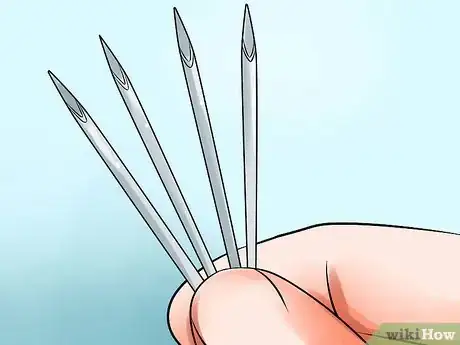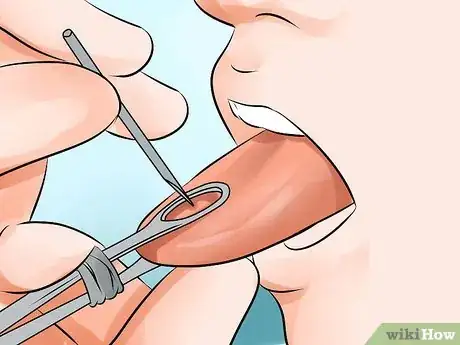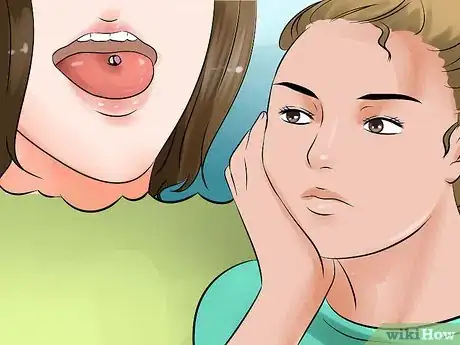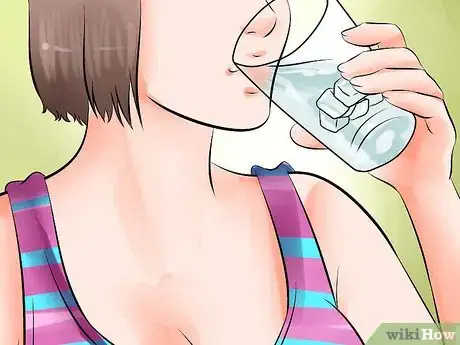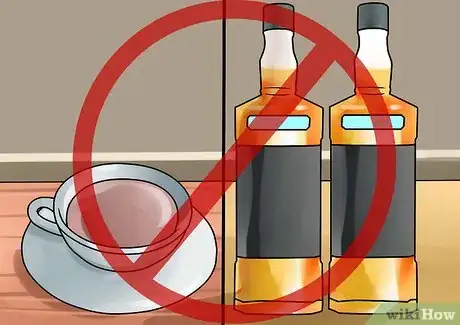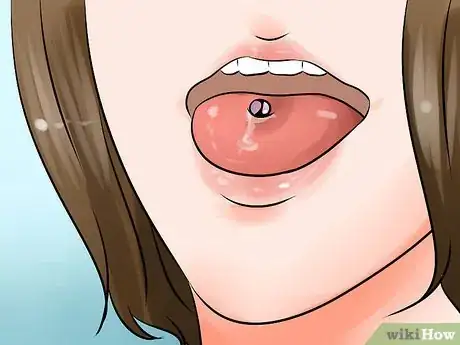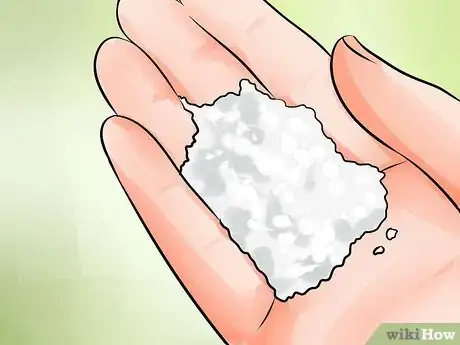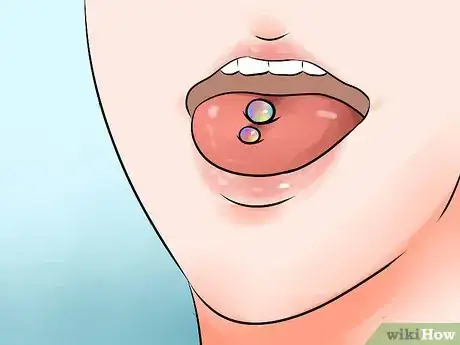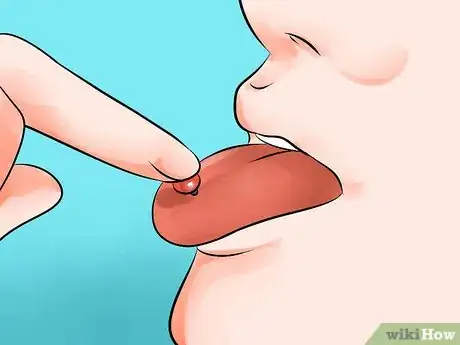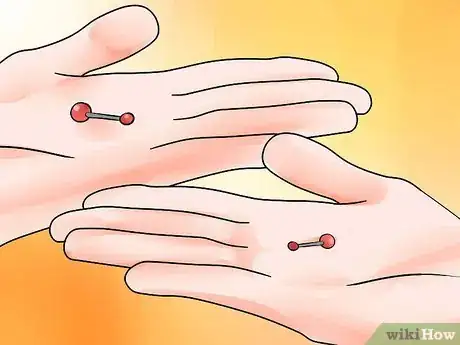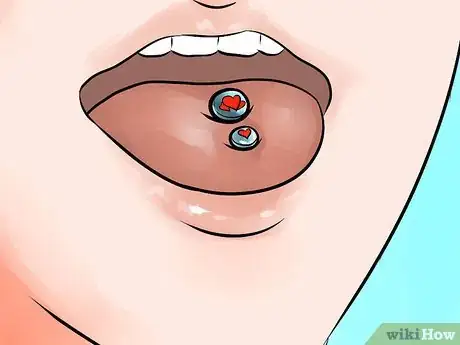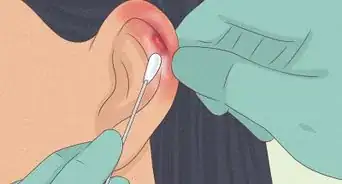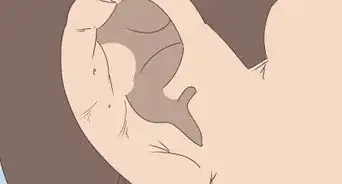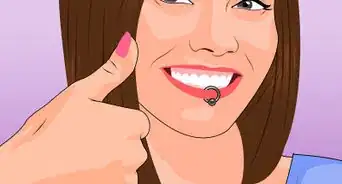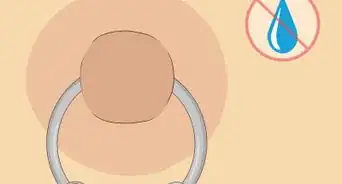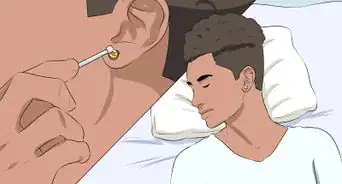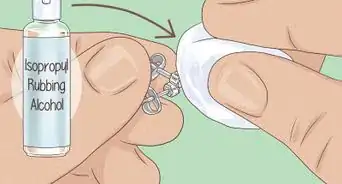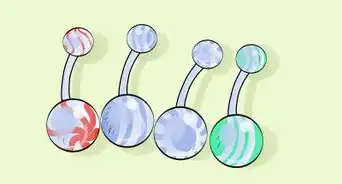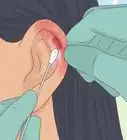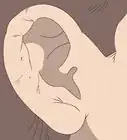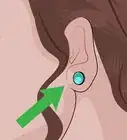This article was co-authored by Sasha Blue. Sasha Blue is a Professional Body Piercer and the Owner of 13 Bats Tattoo and Piercing Studio in the San Francisco Bay Area. Sasha has over 20 years of professional body piercing experience, starting with her apprenticeship in 1997. She is licensed with the County of San Francisco in California.
There are 7 references cited in this article, which can be found at the bottom of the page.
wikiHow marks an article as reader-approved once it receives enough positive feedback. This article received 38 testimonials and 94% of readers who voted found it helpful, earning it our reader-approved status.
This article has been viewed 1,038,833 times.
If you get a tongue piercing, it is crucial that you take care of it properly. Tongue piercings can easily become infected due to improper care. Follow these few simple guidelines to clean and maintain your tongue piercing and it will heal perfectly in no time!
Things You Should Know
- Get your tongue pierced at a reputable, clean shop that uses sterilized needles.
- Use ice chips to soothe your initial symptoms and avoid alcohol, spicy food, tobacco, or chewing gum while your tongue heals.
- Rinse with alcohol-free mouthwash 4-5 times a day while the piercing heals; you can use sea salt or anti-microbial soap to soothe irritation directly if you’d like.
- Change your jewelry out after the initial swelling dissipates to keep your tongue from getting infected.
Steps
Getting the Piercing
-
1Get permission. If you are under 18, make sure you get permission from a parent or guardian before you get the piercing. You need to have this approval so that you don't waste your time taking care of a piercing that you'll just have to take out regardless.[1]
-
2Do your research. Find a piercer with a good reputation at a reputable tattoo or piercing shop. Read customer reviews online to find out information about the piercer's reputation, and make sure the piercer has completed an apprenticeship with a reputable piercer.Advertisement
-
3Check out the shop. It is crucial for a piercing/tattoo shop to be sterile and clean. If you go to the store, and it does not appear immaculately clean, don't get a piercing there.[2]
-
4Make sure sterile utensils are used. When you get the piercing, make sure that the piercer opens up a package of unused, sterile needles to use for your piercing. This is crucial to prevent the spread of infection and disease.[3]
-
5Expect a little pain. The piercing itself will hurt minimally. The initial healing and swelling are the worst part.
-
6Don't be surprised. For the actual piercing, the piercer will take a clamp and put it on your tongue to hold it in place. This protects you from jerking when the piercing happens.[4]
Surviving the Initial Healing Period
-
1Know what to expect. There will be more symptoms for the first 3-5 days immediately after getting the piercing. Expect to see swelling, light bleeding, bruising, and tenderness, especially during this initial period.[5]
-
2Use ice chips to help with swelling. Drink lots of ice cold water and let small ice chips melt in your mouth to help keep the swelling down. Make sure they are small ice chips so you don't freeze your mouth.[6]
- Don't suck on the ice chips; just let them melt in your mouth.
-
3Avoid potentially harmful objects and activities. It's a good idea to avoid tobacco and alcohol during the initial week of healing.[7] You should also avoid large amounts of caffeine, oral sexual contact (including french kissing), chewing gum, and playing with your jewelry.[8]
-
4Avoid spicy, hot, salty or acidic foods for a while. These can cause stinging and burning sensations on and near the piercing.[9]
-
5Expect some discharge. Even if you follow these steps and do exactly what the aftercare sheet says, there could still be a whitish goo that come out of the piercing hole. This is normal and is not an infection. Just make sure that it is not puss.[10]
Cleaning it Properly
-
1Rinse your mouth. After you get the piercing, use alcohol-free mouthwash 4 or 5 times daily for up to 60 seconds, including after meals and at bedtimes.[11]
-
2Clean the piercing. To clean the outside of the piercing, dab sea salt on the piercing 2 to 3 times daily and wash with mild anti-microbial soap up to twice a day.[12]
-
3Wash your hands. Always wash your hands with antibacterial soap before cleaning or touching the piercing or jewelry.[13] Never touch the piercing except during moments of cleaning.
-
4Dry the piercing properly. Dry the piercing after cleaning with a paper towel or napkin instead of a bath towel or cloth. Towels can contain germs and bacteria, so it is better to use a disposable paper product instead.[14]
Wearing the Right Jewelry
-
1Check the balls regularly. Occasionally, the balls on tongue piercing bars can become unscrewed or loose over time. It is important that you regularly check to make sure they are tight. Use one hand to hold the bottom ball in place and use the other hand to tighten the top ball.[15]
- Note: To tighten the balls, remember twisting to the right tightens and twisting to the left loosens.
-
2Change the jewelry after the initial swelling dissipates. Know that the original jewelry should be replaced with shorter jewelry after the swelling has reduced. See your piercer for this change, because it usually will be during the healing period.[16]
-
3Choose the right style for you. Once the initial healing process is over, you can pick any of the many styles of jewelry for your tongue piercing. Just keep in mind if you have metal allergies or sensitivities to certain materials.
Community Q&A
-
QuestionWhy does it matter if my mouthwash is alcohol-based or alcohol-free?
 Community AnswerAn alcohol-based mouthwash can irritate your piercing and make it more painful.
Community AnswerAn alcohol-based mouthwash can irritate your piercing and make it more painful. -
QuestionCan I drink warm tea with sugar within the first week of getting my tongue pierced?
 Community AnswerYes, you will be able to eat normally after a week. It can take up to three to ten days for the swelling to go down, just make sure you're cleaning it after every meal or drink if it isn't water.
Community AnswerYes, you will be able to eat normally after a week. It can take up to three to ten days for the swelling to go down, just make sure you're cleaning it after every meal or drink if it isn't water. -
QuestionIs it normal for the ball to make a spot in my tongue?
 Community AnswerYes. During the healing and swelling it may leave a dent.
Community AnswerYes. During the healing and swelling it may leave a dent.
Warnings
- If swelling still occurs one month after getting pierced, see a doctor. Swelling should only last 2-6 days.⧼thumbs_response⧽
- Always remember to keep the piercing in for at least two weeks before changing the jewelry so that it doesn't close up. The piercing will close in under 30 minutes if you take the piercing out too soon.⧼thumbs_response⧽
- Don't gargle with a lot of salt water. This will irritate the freshly pierced tongue, and it burns.⧼thumbs_response⧽
References
- ↑ http://www.ncsl.org/research/health/tattooing-and-body-piercing.aspx
- ↑ https://www.webmd.com/skin-problems-and-treatments/how-to-pick-a-tattoo-shop
- ↑ https://www.mayoclinic.org/healthy-lifestyle/adult-health/in-depth/piercings/art-20047317
- ↑ https://www.oralanswers.com/pierced-tongue-procedure/
- ↑ https://www.safepiercing.org/aftercare.php
- ↑ https://www.dentalcare.com/en-us/ce-courses/ce423/aftercare-for-piercings
- ↑ Sasha Blue. Professional Body Piercer. Expert Interview. 25 November 2019.
- ↑ https://www.dentalcare.com/en-us/ce-courses/ce423/aftercare-for-piercings
- ↑ Sasha Blue. Professional Body Piercer. Expert Interview. 25 November 2019.
- ↑ https://www.dentalcare.com/en-us/ce-courses/ce423/aftercare-for-piercings
- ↑ https://www.safepiercing.org/aftercare.php
- ↑ https://www.safepiercing.org/aftercare.php
- ↑ https://www.safepiercing.org/aftercare.php
- ↑ https://www.safepiercing.org/aftercare.php
- ↑ https://www.safepiercing.org/aftercare.php
- ↑ https://www.safepiercing.org/aftercare.php



